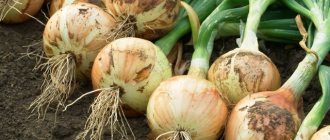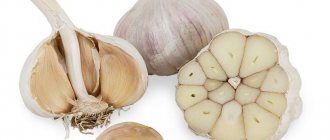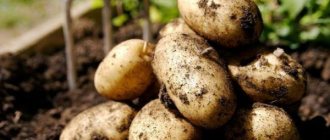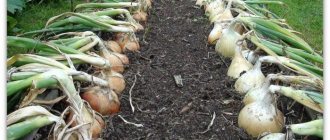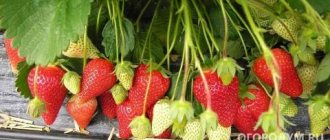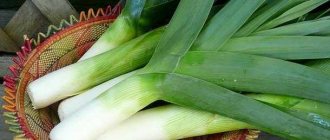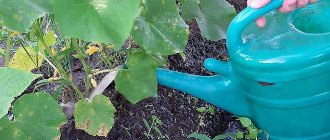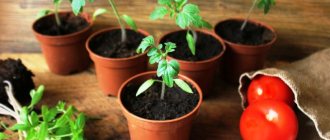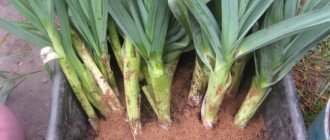It is important for vegetable growers not only to grow the crop, but also to harvest it correctly. The article will help you decide when to harvest leeks and how to properly store the crop after harvest.
This amazing plant is consumed not only fresh, but also pickled, salted, and dried. The vegetable gives dishes a piquant taste; it is good to add when cooking first courses, cutting salads or preparing snacks. A special feature of leeks is their ability to increase the concentration of vitamin C during long-term storage, which increases the value of the vegetable in winter.
The entire final growing process can be divided into 3 equal stages, the correct implementation of which will allow the vitamin composition of leeks to be preserved for a long time:
- digging leeks out of the ridge;
- mechanical cleaning, pruning;
- putting into storage.
If the rules are carefully followed, leeks are well stored until next spring and help to saturate the diet with useful components.
Optimal timing for harvesting leeks
The timing of harvesting a healthy vegetable includes various parameters and criteria:
- depending on region
In warmer regions, leeks are harvested in August by covering the area with the onions with a translucent film two or three weeks in advance to whiten the lower part of the root. Such onions are suitable for food immediately after harvesting. In regions where onion sowing is delayed, the crop is harvested in September. If the purpose of winter storage is pursued, then leeks are also collected in September.
Harvesting times may vary at different times of the season depending on climatic conditions in a given period
- depending on the variety
Leeks come in several varieties, which also affects the harvest. The “Vesta” variety is ready for harvesting after one hundred and twenty days from sowing, and “Columbus” can be put into bins after ninety days. Experienced vegetable growers, having started sowing leeks, themselves determine which variety to choose for the harvest. Manufacturers always leave instructions and a description of the variety on the seed package.
When to clean?
Harvesting leeks is determined by the varietal of the crop. Early varieties are dug up in the summer. During this same period, it is recommended to use the greens immediately - they are not suitable for long-term storage. Later varieties, which grow for 5-7 months, are able to withstand light frosts (up to 7 degrees). They can be stored for a long time.
Residents of central Russia and Belarus grow leek onions of late-ripening varieties until early to mid-December. The climatic conditions of the latitudes are relatively mild. Wanting to preserve the harvest until the end of spring, gardeners should not keep the plants in the garden until severe frosts - after the first small frosts, the onions must be removed .
In the northern regions of Russia, in Siberia and the Urals, it is recommended to harvest in September, and in warm weather - in October. You can understand when to dig up leeks by external signs:
- fallen and yellowed leaves;
- drying of the neck of the bulbs;
- dry and flaky skin coming out of the ground to the surface.
These signs do not always appear together.
- Rainy and cold summers keep the color of the feathers bright.
- Early frosts, on the contrary, lead to premature yellowing and falling of leaves.
Therefore, the degree of maturity of Leek is easier to determine by a set of characteristics.
The exact timing of harvesting leeks is determined by the gardener himself. This takes into account the weather conditions of the summer and autumn seasons where the crop is grown, as well as the speed of its ripening. Leeks require a long time to fully mature. During hot and dry summers this process accelerates; during the rainy and cool seasons it is delayed.
Harvesting time
- early
Early varieties of leeks are usually planted in April-May and harvested after ninety days, that is, approximately August-September. It is not advisable to keep this variety in the ground, otherwise the taste of the vegetable may deteriorate.
- mid-early
These leek varieties are sown in May and harvested in September. They can be left to overwinter in the ground. When they sprout in the spring, they will shoot an arrow, where the seeds will be located. This leek can be stored for no more than three months.
- late ripening
Late-ripening leeks are planted later than all other varieties and are the last to be harvested. If they sown an area in June, then they need to be harvested in October or November. This variety is always harvested later than the average period of time intended for harvesting.
- harvesting dates for varieties planted before winter
Some vegetable growers plant leeks in late autumn and then onion shoots appear in early spring. It ripens earlier than leeks planted through seedlings.
- depending on the weather (weather influence on harvesting times)
Depending on the climate and weather conditions, a specific variety of leek is selected for planting. If the variety is chosen incorrectly, then you may not have time to grow it before a certain period of time and lose productivity. In areas closer to the north, onions begin to be harvested in October, in the middle zone, harvesting begins in early November, and in the southern regions, vegetable growers dig up onions in early December. It is necessary to remember about the type of onion in order to start harvesting on time; it is believed that if the tops lie on the ground, then the vegetable is ready to be dug up.
- according to the lunar calendar (phase and sign of the moon, lunar day)
Some vegetable growers adhere to harvesting according to the lunar calendar, and although each year has its own specific harvest time according to this criterion, the main thing to remember is that it is better to harvest the crop during the waning moon and in the constellation Capricorn or Aquarius. It is generally accepted that during the moon period in the constellation Cancer, leeks can be watery, which will lead to rapid rotting during storage.
How to grow
In the Moscow region, leeks are grown through seedlings, this way they achieve results faster. The fact is that the growing season for leeks is quite long - up to 200 days for late varieties and up to 120 days for early varieties. You can plant seeds in seedling containers at the end of February and by the time they are planted in the ground, the plants will be quite large. This will speed up the time for harvesting leeks.
You can plant the seedlings in a permanent place when the third leaf has formed on the leek. By that time, the ambient temperature will already be steadily warm, since the third leaf of the plants appears approximately 8 weeks after germination.
The crop requires light and nutritious soil. Before planting, 3-4 kilograms of humus per 1 square meter of land and a couple of handfuls of wood ash are added to the ground.
The tops of the leaves of the seedlings are trimmed to improve survival rate.
The basis of cultivation is proper planting. Onions are planted in fairly deep trenches, into which soil must then be added as they grow. This is necessary for the leek to grow a long white stem. Select a bed from which the onions will go for storage. It is not recommended to cut off the green leaves of such plants.
Fertilizing is carried out up to 3 times during the growing season, alternately watering the leek with mineral and organic fertilizers. Watering regularly, the plant does not tolerate drought, especially at a young age. By the time of harvest, watering should be reduced.
Signs that the crop is ready for harvest
When the leek begins to change visually, it means it is ready to be dug up, processed and stored. The first sign is that the tops begin to turn yellow and fall to the ground. The outer bulb scales take on the color of the onion variety. The neck of the onion begins to dry out and becomes thinner. Onion feathers are not as elastic as when emerging.
If half of the crop tends to the ground, then vegetable growers begin to dig up some of the bulbs to determine the maturity of the crop. If the scales can be easily removed from the onion stem, then it’s time to harvest the vegetable. If the onion is unripe, it is highly saturated with water and then it will not be able to be stored for a long time, but will begin to rot.
If the tops are completely green, you cannot dig up the onion. If you delay the harvesting time, you can see how the onions begin to form new roots and the scales begin to burst, which will lead to a loss of taste and reduce shelf life.
Signs of maturation
When growing a crop, they always study information about it. It is recommended to make a mark on the calendar, the day of sowing onions and planting seedlings in the ground. It is recommended to make another mark, the predicted harvest date. It depends on the technical maturity of the variety.
When growing leeks, it is recommended to use the drug “Shine-1”. It contains bacteria that protect the root crop from pathogenic microflora. They process organic matter that is in the soil, which prevents the development of rot and fungus. The drug is used for soaking nigella and for feeding seedlings.
It may differ from the actual ripeness of vegetables. Gardeners recommend always monitoring plants and their development. When to remove onions from the garden for storage:
More on the topic: Rules for growing onions
| № | Helpful information |
| 1 | the ripening period corresponds to the technical maturity indicated by manufacturers |
| 2 | onions stop growing; the stem does not rise in height |
| 3 | leek leaves are lance-shaped, fanned out on the stem, directed upward; color has a dark green tint |
| 4 | When the root crop ripens, the leaves become light, the tips become weaker and droop down. |
| 5 | the lower protective shells become dense but thin; lose their juiciness |
3 weeks before the predicted harvest date, watering is stopped. At the last watering, fertilize with a biostimulator of growth: “Root”, “Zdraven”, “Effekton”. You can fertilize with a solution of boric acid. It improves the productivity of the plant and promotes better storage.
Igor Nikolaev
auto RU
In rainy weather, the onions are covered with film. Otherwise, the herbaceous part will increase, the root will be watery, and the taste characteristics will decrease.
Ventilation
Green and edible leaves are cut into two-thirds, thus cutting off the dried ends. Some vegetable growers adhere to the rule and do not pick off bad leaves so that the subsequent ones do not dry out faster during storage. When you have dealt with the tops, you can start trimming the roots. They need to be cut in half and try not to touch the bottom of the onion.
After the procedures have been completed, they begin to dry the leeks for further storage. In rainy or humid weather, this is done under a canopy to allow fresh air to flow in, and in sunny and warm weather, they are simply dried in a garden bed or on a certain surface.
Selection and sorting
Before sending leeks for winter storage, you must sort them out. Onions with strong and intact stems are stored longer, so they will be suitable for long-term harvesting. If the stem or leg is slightly damaged, then it is better to eat this specimen immediately, otherwise it may spoil during storage.
How to prepare it for storage?
After digging up the leeks, you need to lightly clear the soil and trim the roots a little. This must be done very carefully so as not to damage the bottom. Plants with damaged bottoms are best used for food in the near future, dried or frozen for the winter. Dry, damaged and contaminated leaves must be cut off by two-thirds. But we leave the whole ones, because with the cut leaves the onion will quickly wither and get sick.
If you do not properly and carefully clean and prepare plants for storage, the onion harvest will simply spoil in the first month.
Features of storage at home
Leeks can be stored in several ways, depending on where you live. If there are certain places for storage in the form of a basement or cellar, you can use them and adhere to the technology for storing this type of vegetable. If there are no specially equipped places, then you can store the harvested crop in the freezer or preserve it.
In the cellar
Vegetable growers living in private houses place leeks in dry cellars or basements. To preserve the vegetable until mid-spring, it would be appropriate to place it in clean and dry boxes. The main thing here is to observe the storage temperature and it should not exceed the desired temperature and humidity parameters.
The air should be kept at a temperature range from 0 to +4 C, and humidity should not exceed 85%. To be sure that leeks will last all winter and last until spring, it is better to choose a late-ripening variety of vegetable. If you want to keep the leeks in their original form as soon as they come from the garden, you can use boxes with sand poured into them.
First, place film or foil on the bottom of the box, pour about seven centimeters of clean sand, it is advisable to calcinate it and cool it. Then place the leek vertically on the sand with a slight slope and sprinkle ten centimeters of sand on top, you can moisten it a little. To prevent rot from forming with this storage method, you can sprinkle ash on top of the vegetable.
But no matter how well the place for winter storage of leeks is provided, periodically during the winter months it is necessary to sort through it and, at the first signs of spoilage, pull it out of the storage place so that it can be used first for its intended purpose.
In a refrigerator
When the leek harvest is small, you can store it in the refrigerator or freezer. In the refrigerator, leeks are stored on the lowest shelf or in a drawer intended for vegetables. Before sending it for storage, it must be processed by cutting the leaves into two-thirds and wrapping the bundles with film.
It is imperative to inspect the onions if they are stored for a long time, so that the packaging film and tops are dry. You can make small holes in the bags so that the onions can breathe and the moisture evaporates on its own.
In the freezer
To store leeks in the freezer until the next harvest, you need to thoroughly wash them, dry them and cut them into pieces that you will need for preparing the dish. Can be placed in special containers or bags and frozen.
When you need to use leeks, pull a portion out of the freezer and do not wash it, but place it directly where you need it. This method allows you to preserve all the beneficial properties of the vegetable. The only drawback to this method is that you cannot freeze much if the freezer is small.
Drying method
Leeks can be prepared for the winter and in the form of a dry seasoning. To do this, you need to peel it, wash it thoroughly, cut it into thin rings, pour it onto a baking sheet and put it in a preheated oven or microwave.
You can also use an electric dryer. Drying should be no more than two hours at a low temperature. After this method of preparation, leeks retain all their beneficial vitamins. During the warm season, you can dry onion rings outside under the shade to avoid direct sunlight; such drying will take three days.
Pickling method
Leeks can be salted or preserved so that you can enjoy the preparation in winter. First you need to prepare the marinade. To do this, take water, lemon juice, salt, vinegar and spices. We first peel the onion, wash it and cut it into rings. Place in prepared sterile jars and fill with boiling marinade.
Screw on the lids and let the jars cool. After this, store it in a cool place where you can take it all winter and enjoy the taste of pickled leeks. It can be added to various dishes or as a seasoning in food.
On the balcony or loggia
If the above storage methods are not suitable and you do not have another place to store leeks like a balcony or loggia, you can use them. To do this, we clean the vegetable from dirt and bad leaves, without resorting to the wet method, dry it and put it in even layers in a box, tightly wrapping it in a warm blanket. This way, the leeks will retain their natural moisture and will not freeze in the event of sub-zero temperatures.
You can also use the basement storage method where the box is filled with sand and the leeks stand in it on the floor at an angle. Only in this case it is necessary to insulate the box with sand in order to maintain a constant temperature.
Preparation rules
The culture preparation procedure depends on the chosen planting method. When planning to store fresh leeks in the winter in a garage, basement or under the snow, it is not recommended to cut off the feathers. Only yellow and dried leaves should be removed. Containers suitable for storage are also prepared. Most often these are wooden or plastic boxes or containers with sand.
The least troublesome method is to lay it in a cut form, when the stems are removed and the bulbs are cut into rings. They are placed in plastic bags or plastic jars with lids. This is the best way to store leeks in the freezer or refrigerator.
If the gardener does not have a cold place for storage, the crop can be dried. To do this, the onions are cut into thin circles and dried in the house. For storage, you can use paper bags or canvas bags.
IMPORTANT! When preparing root vegetables for slicing and subsequent freezing or drying, it is necessary to rinse the bulbs in running water.
